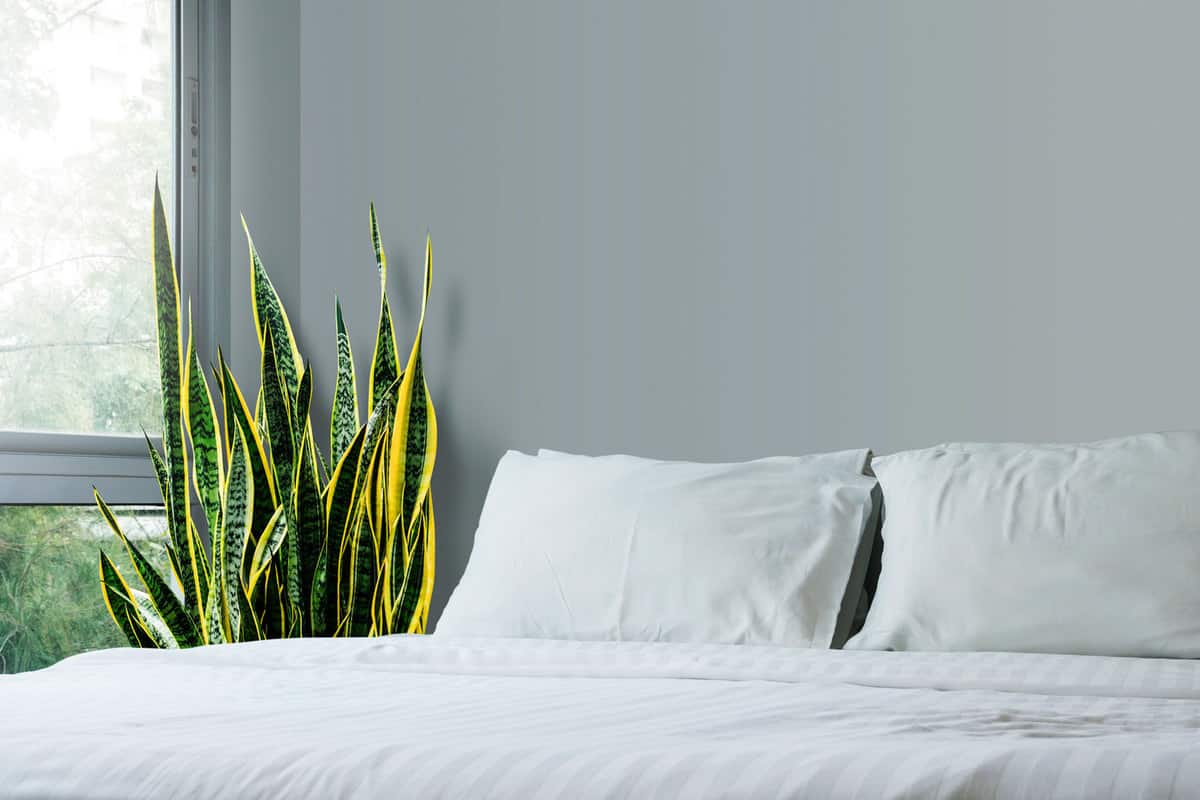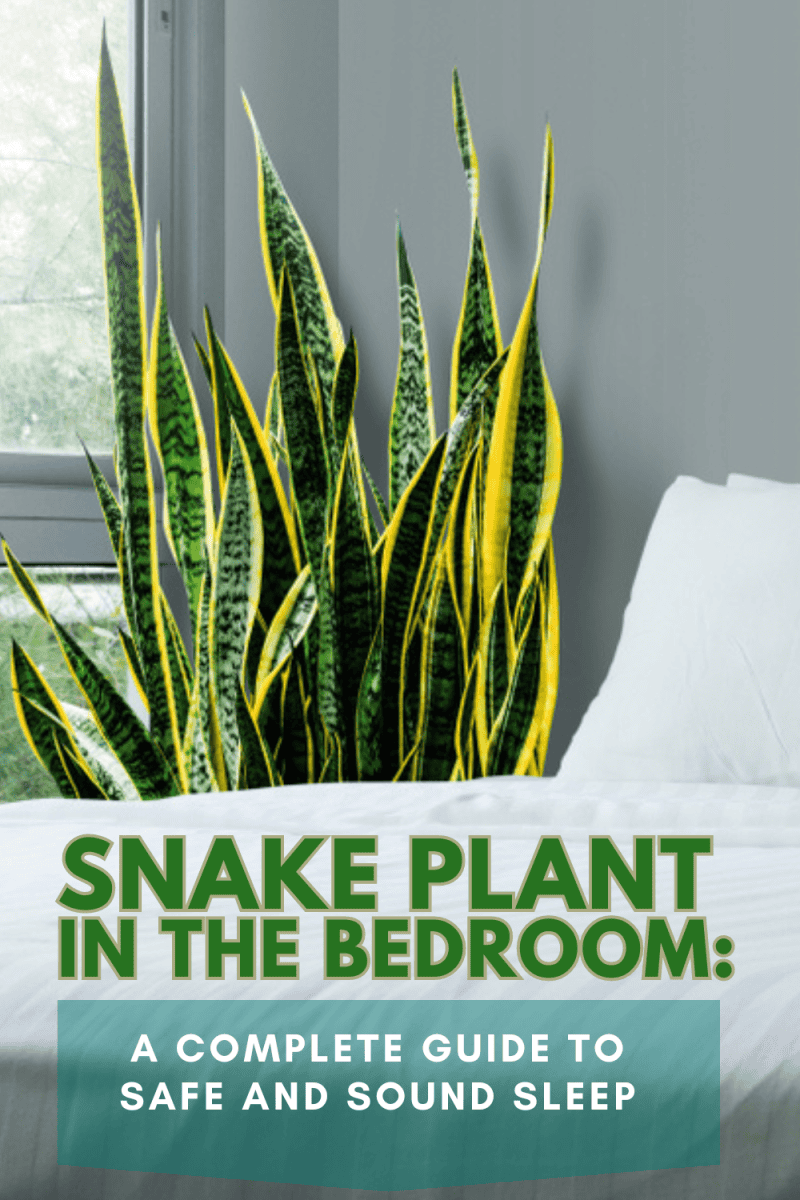Snake plants, also known as Sansevieria, are a popular houseplant that can be found in many homes.
Not only are they aesthetically pleasing, but they also offer numerous health benefits. One of the most significant benefits of snake plants is their ability to improve the air quality in a room and improve quality of sleep.
In this complete guide to safe and sound sleep, you will learn everything you need to know about snake plants in the bedroom.
So, whether you're struggling to get a good night's sleep or simply looking to add a touch of greenery to your bedroom, keep reading to learn more about the benefits of snake plants in the bedroom!
Benefits of Snake Plant in Bedroom
The snake plant is a popular indoor plant that has been around for centuries.

Snake plants are well-known for their air-purifying properties, which makes them perfect for use in the bedroom.
In this section, we will explore some of the benefits of having a snake plant in your bedroom.
Improves Air Quality
A study conducted by NASA found that one species of snake plant could remove up to 52.6 percent of pollutants from the air within 24 hours.

According to the study, this snake plant can remove all pollutants from the air in about 48 hours.
Snake plants can remove toxins such as formaldehyde, xylene, toluene, trichloroethylene, and benzene from the air, improving the air quality of your room.
Promotes Sound Sleep
Snake plants are also great for promoting sound sleep. They convert carbon dioxide to oxygen at night, which can help you breathe easier and sleep better.

The increased oxygen level can lessen the impact of airborne allergens like dust and dander.
Thus, snake plants can help alleviate some symptoms of allergies and respiratory ailments, such as asthma, and promote better sleep.
With a snake plant in your bedroom, you can enjoy a better night's sleep and wake up feeling refreshed!
Boosts Mood and Reduces Stress
Snake plants are also known for their ability to boost mood. They release oxygen, which can help to increase energy levels and reduce stress.
They are great for reducing anxiety and promoting relaxation, which can help you feel more calm and centered.
To learn more, please check this out: Does Sansevieria [Snake Plant] Purify Air?
Essential Considerations for Snake Plants: Size, Lighting, and Pet-Friendly Aspects
If you're thinking of adding a snake plant to your bedroom, there are a few important factors you should consider. Let's take a look at these key aspects:
Size
Snake plants come in different sizes, so it's important to choose one that fits your space.

If you have a small bedroom, consider a smaller variety like the Sansevieria trifasciata Compacta. It's a dwarf snake plant that grows about 6 to 10 inches tall.
If you have a larger space, you can opt for a taller variety like the Sansevieria trifasciata Laurentii. This plant grows 24-30 inches.
Light Requirements
Snake plants prefer a moderate amount of sunlight that is indirect and consistent, although they can tolerate some occasional direct sunlight.

Snake plants are versatile and can thrive in various lighting conditions, whether it be dimly lit rooms or rooms that receive more sunlight.
Toxicity
It's important to know that snake plants can be toxic to cats if they chew or ingest them. So, if you have a furry feline friend, it's best to be cautious about having a snake plant in your bedroom.

So here's the thing: if you want a snake plant in your bedroom, you have to make sure your cat never goes in there. Keep it off-limits for your furry friend.
Remember, it's not just cats. Snake plants can also be toxic to dogs and other pets. So, be careful if you have other furry buddies around. Read more on this: Are Snake Plants Toxic To Cats?
Positioning Your Snake Plant
Snake plants are versatile and can thrive in a variety of locations. However, they prefer bright, indirect light.
This means that they should be placed near a window in your bedroom but not directly in front of it. Snake plants will do better on a stand or desk next to the window.

Direct sunlight can cause the leaves to become scorched and damaged. If you notice that your snake plant is receiving too much direct sunlight, move it to a location where it will receive less light.
On the other hand, if your mother-in-law's tongue plant is placed in low-light conditions, it may start to grow spindly as its leaves reach for more light.
If you observe this stretching behavior, it's a sign that your plant needs more light. Relocate it closer to a suitable light source to promote healthier growth.
To determine the ideal location for your specific snake plant, choose a spot and closely observe its growth.
Is it growing at a slow pace? If so, it may need more light. Consider providing it with additional light exposure.
To learn more, please check this out: Can A Snake Plant Survive Direct Sunlight?
By following these guidelines, you can ensure that your snake plant thrives and contributes to a restful night's sleep.
How to Take Care of Snake Plants
They are hardy and can tolerate a wide range of conditions, making them ideal for people who don't have a lot of time to devote to plant care.
Watering
Snake plants are succulents, which means they store water in their leaves. They don't need to be watered very often, and overwatering can cause the roots to rot.

As a general rule, water your snake plant every 10 to 14 days. Make sure the soil is completely dry before watering again.
It's better to under water than over water snake plants.
Soil
Snake plants prefer well-draining, slightly acidic soil. A good potting mix for snake plants should include perlite, coco coir, and sand to improve drainage.

Read more about snake plant soil needs: What’s The Best Soil For Snake Plants?
Temperature
Snake plants are tropical plants and prefer temperatures between 60 to 85 degrees Fahrenheit.

Snake plants can handle cooler temperatures as long as they stay 50 degrees Fahrenheit or higher.
They won't freeze or suffer in an air-conditioned bedroom because they're very adaptable.
Fertilizer
Snake plants don't need a lot of fertilizer, but you can feed them once a month during the growing season with a balanced, water-soluble fertilizer.

Remember, snake plants are low-maintenance, but they still need some care to grow their best.
In Closing
Snake plants are a great addition to the bedroom. They are known for their ability to purify the air, release oxygen at night, and improve sleep quality.
They can thrive in low-light conditions and do not require frequent watering.
Overall, snake plants can be a great addition to the bedroom for those looking to improve their sleep quality and air quality.
With their unique sword-like leaves and easy care, they can add a touch of natural beauty to any bedroom!

